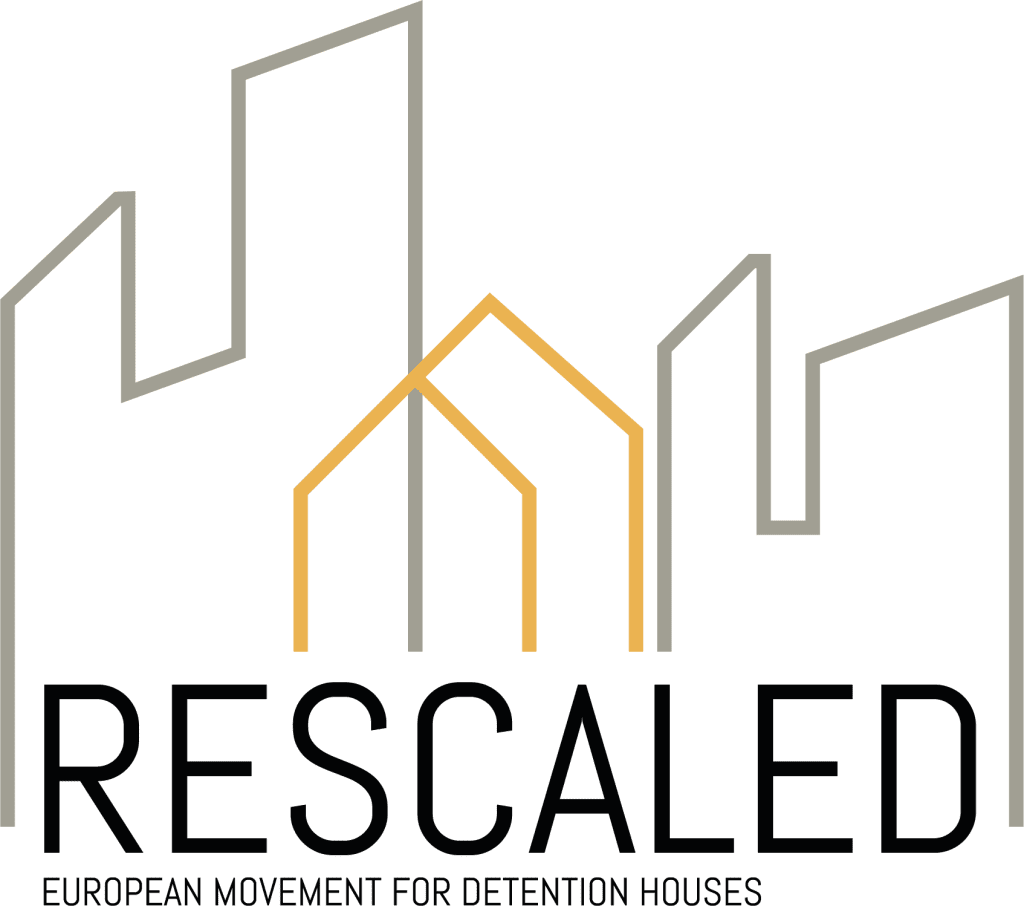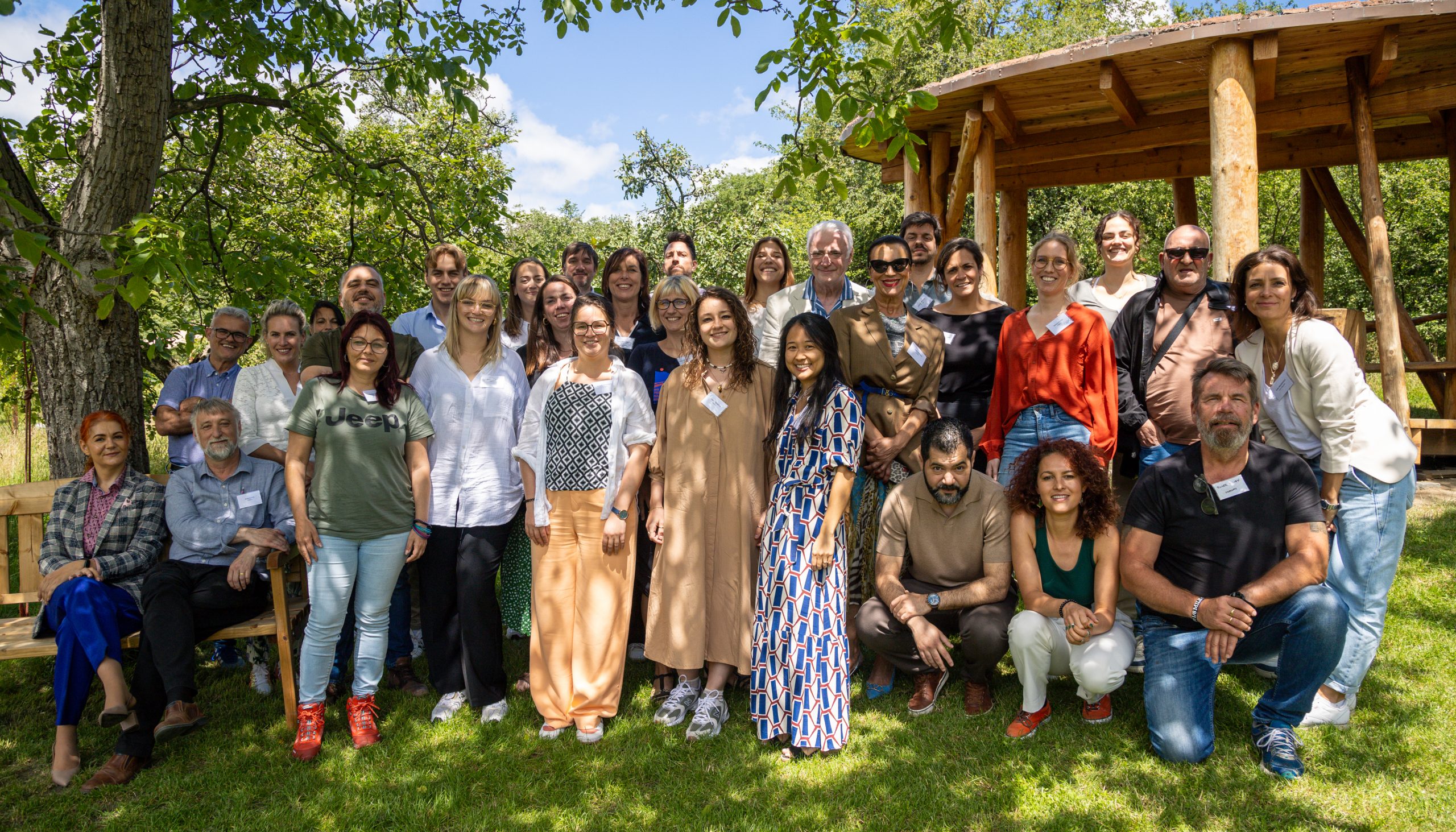The journey towards community-integration in the implementation of a detention house
Introduction
Detention houses are characterized by three principles: small-scale, differentiation and community-integration. Unlocking the keys to community integration in the implementation of a detention house is not just about laying bricks and building walls in a neighbourhood – it is about coherence of communication, collaboration and cohesion with stakeholders and local residents. Creating community integration when implementing a detention house can be a challenge. What is the best strategy? Is there one possible strategy that applies to different countries, each with its own political landscape and cultural characteristics? There is no easy answer to these questions. The answers we do have suggest that the process of community-integration is intrinsically linked to the context and people who make up the community. In this article, we unravel the different processes of implementation seen with detention houses in Belgium, depending on their context and neighbourhood. Manu Pintelon, a criminologist based at VZW De Huizen (RESCALED Belgium Office), has been closely involved in this process. Last month, he sat down with us for an interview.
Let us start with a bit of background information. Belgium has undergone impressive developments over the last decade: from an idea to concrete plans of the Federal Government to implement detention and transition houses. Can you briefly explain the difference between a transition and a detention house?
Manu: Transition houses are small-scale facilities where incarcerated people can transfer from 18 months before their conditional release date. This type of facility is well-known in Europe and operates under various terms (e.g. halfway house). Residents often spend the majority of their daytime at work or school in the community and stay in the transition house at night. Staff actively supports them in their reintegration process. In Belgium, there are currently three transition houses: Mechelen (since 2021), Gentbrugge (since 2023) and Leuven (opening in 2024). By 2025, the Ministry of Justice aims to have a capacity of at least 100 places in transition houses.
Detention houses, on the other hand, can accommodate incarcerated people from the first day of their sentence. The first detention houses in Belgium are set for a target group of people with sentences shorter than 3 years. The first detention house was opened in Kortrijk (2022) and the second in Vorst (2023). By 2025, the Ministry of Justice aims to have 10 detention houses in the country.
The implementation of detention and transition houses does not come without challenges. In fact, the construction of detention facilities is often heavily contested and resisted by local residents. How has this implementation process been in Belgium?
Manu: The implementation strategy depends on whether we talk about transition houses versus detention houses. The process differs according to who manages the house. We can deduce one important difference, namely that transition houses involve the community at an early stage, while detention houses tend to involve the community only at a later stage. Transition houses are run by independent organizations, such as the transition house in Leuven which will be run by NGO De Kansenfabriek. These organisations work closely with the local government and sometimes work together to find a suitable building to establish a transition house. They keep the community informed through letters, open meetings and events, making sure that everyone can participate from the beginning. For example, in Leuven, 150 people were invited to a neighbourhood event organized by the transition house management, which included the mayor and people with lived experience.
Detention houses, such as in Kortrijk and Vorst, are managed by the Federal Government and follow a more centralized plan. The locations are chosen based on available buildings after which discussions are started with local authorities. Getting their solid support is key for the successful implementation of these houses. Yet these talks can become more challenging as more details become known and detention houses may face more opposition from neighbours and local authorities who were not part of the earlier discussions. These different strategies point out that the timing of community involvement is important for the acceptance of these housing projects.
Can you tell us more about who is present at these neighbourhood meetings?
Manu: Definitely. Before the opening of a detention house, the neighbourhood meeting is an important step in creating interaction between the detention house and the community. These neighbourhood meetings bring together a diverse range of individuals, with the people who live in the vicinity as the primary focus. In addition, city councillors, non-profit organizations such as NGO De Huizen, people with lived experience, and street workers or community workers are invited to the meeting. The presence of these social organizations leads to one-on-one conversations that delve deeper into the specific concerns and needs of the community. Central to these discussions is the importance of inviting individuals who embody the essence of the city, who are familiar with the pulse of the city and who are capable of immediate, informed responses – an indispensable role often filled by street workers or community workers. Furthermore, the involvement of the neighbourhood police officer is a crucial component, which promotes understanding and works towards effective integration within the community. This diverse composition of people involved in a neighbourhood meeting underlines the need to include multiple perspectives and local stakeholders when implementing a detention house.
The ‘Not in My Backyard’ or NIMBY Syndrome is defined as an ‘attitude of intense, sometimes emotional and categorical opposition to a project that local residents consider will have negative effects (Sébastien, 2013). Recurring arguments made by the neighbourhood often include rising insecurity, fear of increased crime rates and nuisance, devaluation of property, etc. You have been present at the neighbourhood meetings in various municipalities of Belgium. Have you noticed the NIMBY syndrome among local residents? What are the arguments commonly heard at these neighbourhood meetings?
Manu: Several questions are raised at neighbourhood meetings, including questions about practical issues: a neighbour’s garden overlooking the garden of the detention house, a lack of parking spaces due to increased traffic of visitors and social services, etc. However, questions about safety also arise (How do we ensure safety around the local child care center?) and the possible impact on the value of nearby houses. This last argument is especially common. People are worried about the decrease in the value of their houses. Looking at real-life examples in Oslo (Norway) and Kortrijk (Belgium), there does not seem to be direct evidence for this concern yet. This is, however, an important factor that should be researched and evaluated upon implementation.
Do you have concrete examples of how to overcome this resistance from local residents?
Manu: An interesting example of how to deal with resistance and find a solution is Genk. Initially, plans for the detention house were met with resistance as the proposal was to build it on land originally designed as a park. The local government and detention house management have now proposed a compromise: the detention house would provide and maintain a large green space, as well as a vegetable garden, highlighting the community’s desire to preserve the green space while repurposing it for communal and functional use. This could potentially contribute to a decrease in resistance to the detention house. However, it currently remains a proposal. Thus we are curious to see how the situation evolves.
Another interesting example is Olen. Following plans to implement a detention house in this municipality, locals were invited to visit an existing detention house in another city: Kortrijk. Here the residents had the opportunity to see the detention house in practice, to meet its staff, as well as some of the persons living there. The visit felt successful as it cleared up a lot of questions for the residents of Olen. Many also experienced the visit positively and thus felt more convinced of having a detention house in their own city.
Have there been cities where the resistance could not be overcome?
Manu: Yes, I’ll give you an example. The Belgian Minister of Justice wanted to implement a detention house in Zelzate and encountered resistance from the local government. This was partly due to the choice of the building which is a former hotel. The location is commonly used as a venue for events like weddings. For the local community, this meant that they would lose this party venue if it were used as a detention house. The resistance could not be overcome, despite ideas to still use a part of the venue for events and train incarcerated people for catering services.
If I look at the cities more generally… I would say that the implementation passes more easily in larger cities such as Brussels, Antwerp, and Genk. Municipalities which already have facilities with a social purpose (such as drug consumption rooms, a large prison, etc.) also find a better footing.
While the theory of how to achieve community-integration is important, we can also learn a lot from evaluating the experience of implementation in practice. Have you noticed a difference in acceptance by neighbours a year after opening the detention house in Kortrijk?
Manu: I agree with you. Practice teaches us a great amount. The very first detention house in Belgium opened in September of 2022, in the city of Kortrijk. Fast-forward to more than a year later: there is an increase in community-integration and appreciation for the facility. The detention house recently did a survey among neighbours on their perspective one year ago and today. The survey entailed questions such as ‘If you are walking past the building in the dark. How did that make you feel one year ago versus today?’. The residents’ answers were recorded and displayed in a short video showing a positive trend in the opinions of neighbours. This video has also been valuable to share at neighbourhood meetings to support the implementation of a new detention house.
What are some concrete examples of initiatives that can inspire others who are looking to build a meaningful relationship with the local community?
Manu: I like to refer to this quote which was shared with me by Amber Deprez:
“It’s a matter of communication but communication is a matter of feeling”.
This quote suggests that to overcome NIMBY resistance, one must understand the emotions of the community. In addition to conveying information, actions such as volunteering, community events and small gestures can build trust and empathy. I can tell you a bit about the initiatives here in Belgium that contribute to a meaningful relationship between the community and people in a detention house. A common example is a social restaurant which employs people who are (or were formerly) incarcerated. In the city of Kortrijk, the residents of the detention house invited the local community for a pancake sale. The proceeds went to a good cause. It was a successful event and strengthened the relationship with the community. Another example is a project called ‘Mooimakers’. The incarcerated people contribute to the local community by helping keep the streets in the area clean. They also offer services to locals by going grocery shopping for vulnerable people or walking their dogs. At the same time, volunteers from the local community engage through a buddy-project in which they couple up with an incarcerated person, allowing them to spend leisure time together.
Another initiative I found very valuable came from the Belgian Ministry of Justice. They further support the implementation process through a financial contribution (x amount/incarcerated person/year) to the municipality in which a detention house is to be implemented. This sum is used to appoint a person in the interest of both the local government and the detention house, who helps bridge the gap with the local community: How can the detention house create value for the municipality? Which local organisations should the detention house collaborate with? These are just some of the questions to be answered by this person.
Thank you for sharing these inspiring initiatives. There is clearly a lot to learn from these developments in Belgium. It makes us hopeful to hear that, despite a natural NIMBY reaction, many neighbours do eventually accept a detention house in their neighbourhood and even manage to see its value. This confirms that building inclusive communities and seeing each other as human beings are universal values that many people tend to acknowledge and appreciate.





